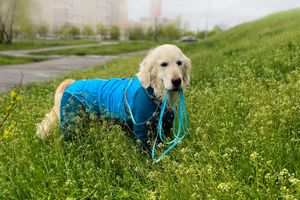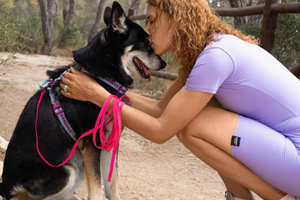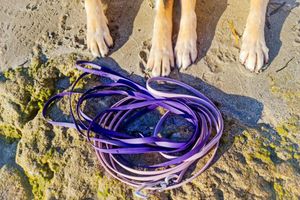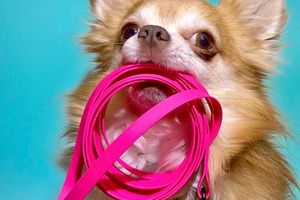Fetching games are probably the most popular games you can play with your dog. They provide decent physical activity suitable for most dogs, and they are easy to teach to your dog. The most important thing is that dogs usually love these kinds of games.
However, that "love" could become a problem, and you may have heard that certain dogs are called "ball junkies." It's not so funny actually, so let's figure it out.
Some dogs get overly excited during the fetch games and demand another throw of the ball countless times. They might be physically exhausted, but they still bark and jump, obsessively stalking you to demand another throw. At some point, they even stop paying attention to the person who throws the ball and concentrate only on the act itself. The simple act of chasing and bringing back the ball becomes an obsession. They might scratch their paw pads or rip off a claw and not even notice the pain or discomfort because they are so obsessed with the game. "Ball junkie" dogs just can't stop, and this becomes a huge problem.
While an owner might think that after an hour of obsessively chasing the ball, the dog is well-exercised and exhausted, it doesn't really work this way. The dog's body might be exhausted, but their brain keeps working pretty actively trying to deal with massive amounts of cortisol (a stress hormone). If you notice even a few symptoms of being a "ball junkie" in your dog, you need to make a pause and rethink the process.
![]() First of all, you should try to reduce the ball playing time. Don't do it every day or during every walk. Play a few times per week tops, and for a short period of time (minutes, not hours!). If you notice that your dog becomes too excited, stop the game and switch to a more relaxing activity like walking at a slow pace, sniffing, etc.
First of all, you should try to reduce the ball playing time. Don't do it every day or during every walk. Play a few times per week tops, and for a short period of time (minutes, not hours!). If you notice that your dog becomes too excited, stop the game and switch to a more relaxing activity like walking at a slow pace, sniffing, etc.
![]() Use the throw of the ball only as a super valuable reinforcement for a perfectly done job during training. Do it rarely and precisely.
Use the throw of the ball only as a super valuable reinforcement for a perfectly done job during training. Do it rarely and precisely.
![]() Switch to alternative ball games. We have two options for you here:
Switch to alternative ball games. We have two options for you here:
![]() Switch toys: Use two balls. When your dog brings the first ball and gives it back to you, throw a ball from your other hand. Don't throw balls too far. Teach your dog to gently return the ball to your hand rather than casually throwing it under your feet.
Switch toys: Use two balls. When your dog brings the first ball and gives it back to you, throw a ball from your other hand. Don't throw balls too far. Teach your dog to gently return the ball to your hand rather than casually throwing it under your feet.
![]() Searching instead of chasing: Hide a ball instead of throwing it and let your dog look for it. For beginners, you could use scented balls or balls with a treat dispenser. It will help them find it easier and keep them motivated. Also, don't hide the ball too far or in hard-to-reach places. For more advanced dogs, you can use a few balls and hide them in different places.
Searching instead of chasing: Hide a ball instead of throwing it and let your dog look for it. For beginners, you could use scented balls or balls with a treat dispenser. It will help them find it easier and keep them motivated. Also, don't hide the ball too far or in hard-to-reach places. For more advanced dogs, you can use a few balls and hide them in different places.
![]() Always follow safety precautions during any ball games! Ball games are a big load on the musculoskeletal and cardiovascular systems of the dog.
Always follow safety precautions during any ball games! Ball games are a big load on the musculoskeletal and cardiovascular systems of the dog.![]()
-Your dog must be warmed up properly.
-Fetching games are prohibited for obese dogs.
-Fetching games must be moderated for growing puppies whose musculoskeletal system is in the process of forming up to 18 months.
-Avoid slippery surfaces (wet grass, dirt, ice, slippery indoor floors, etc.).
-For yet untrained properly dogs, use a long leash if you play on unfenced areas.
![]() Enjoy spending time with your dog!
Enjoy spending time with your dog!
![]() Stay healthy and safe!
Stay healthy and safe!







